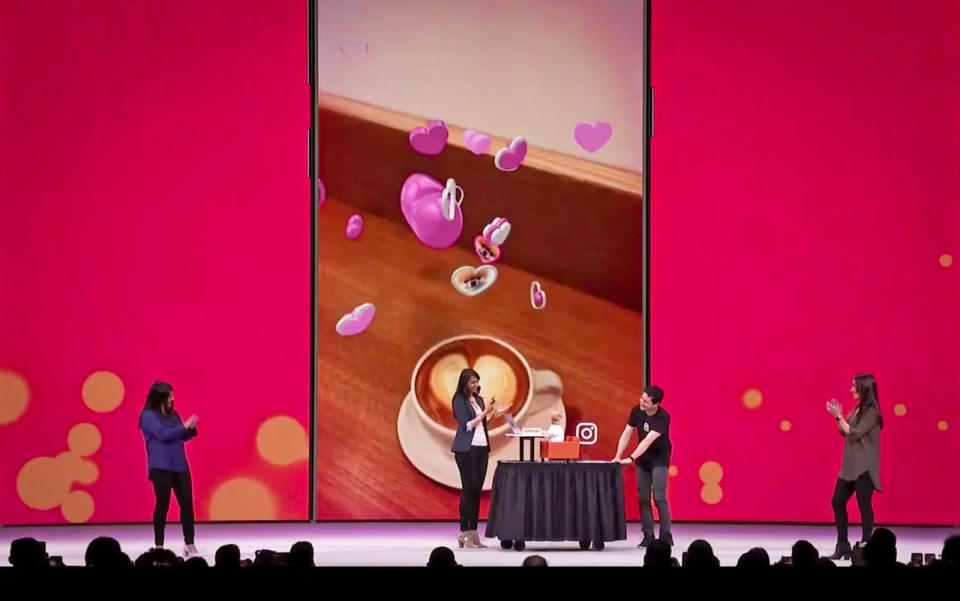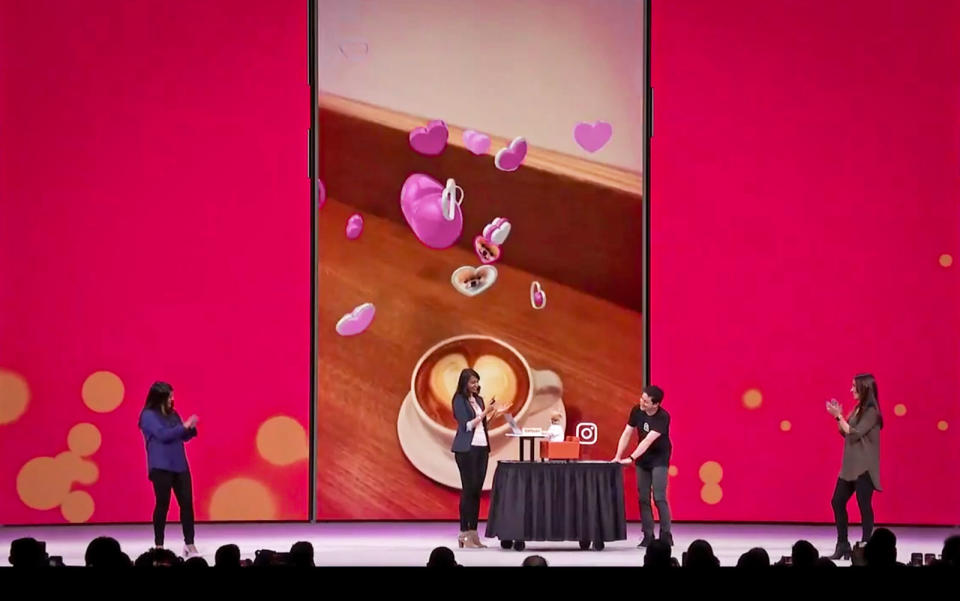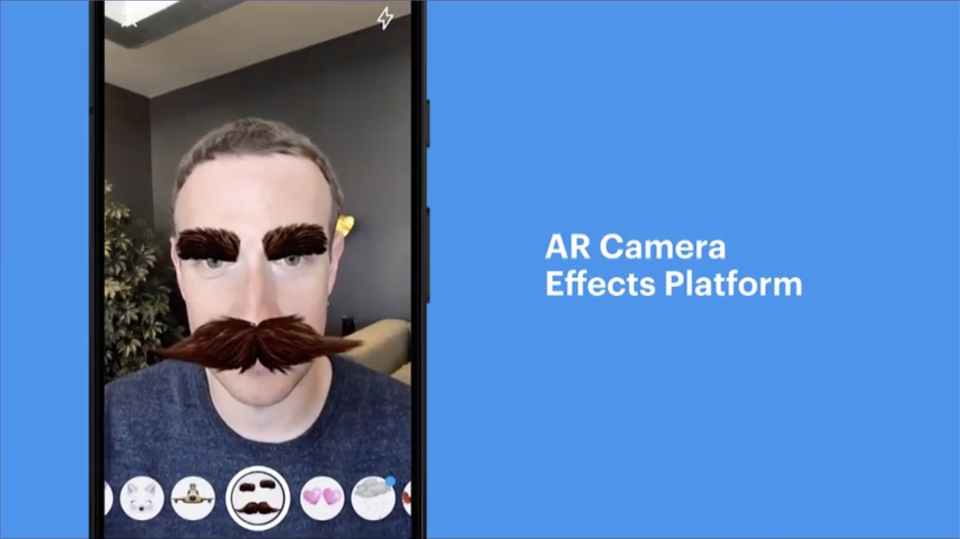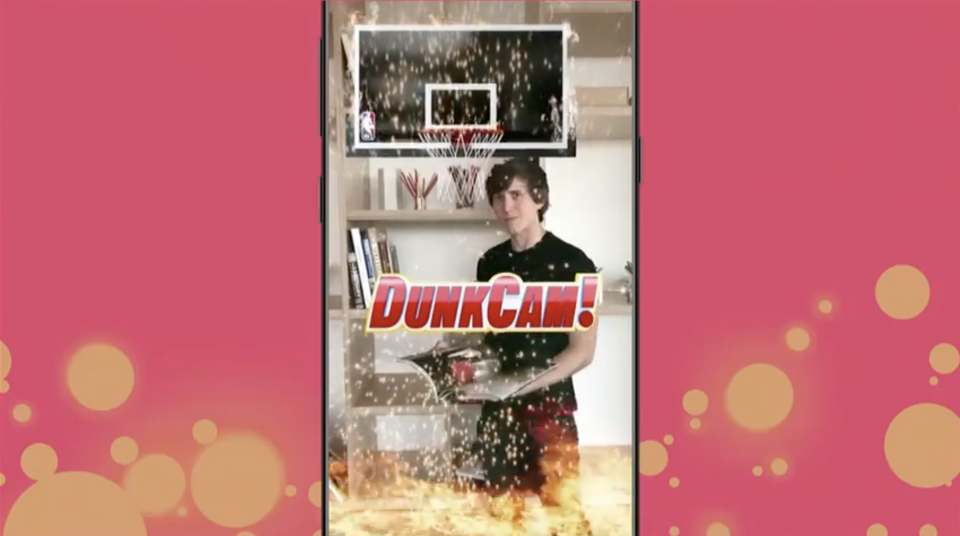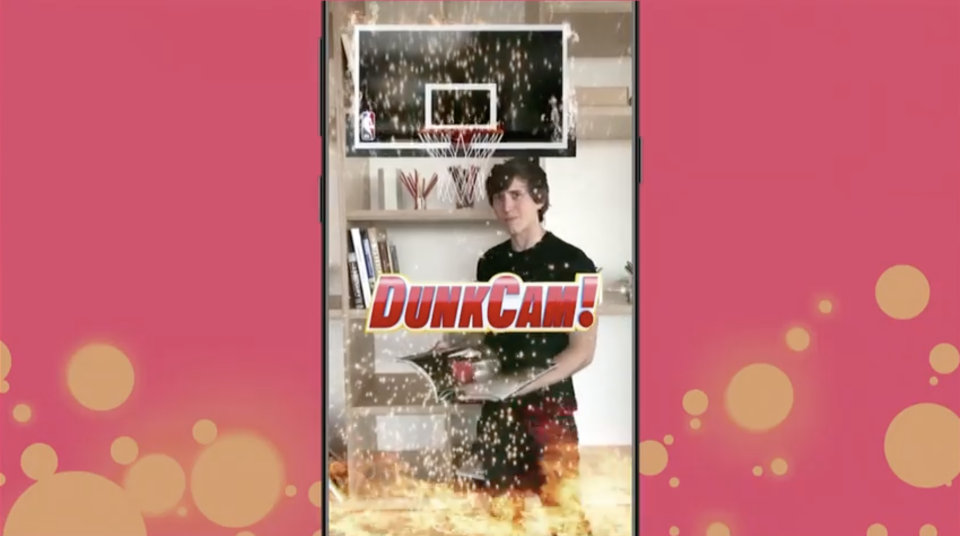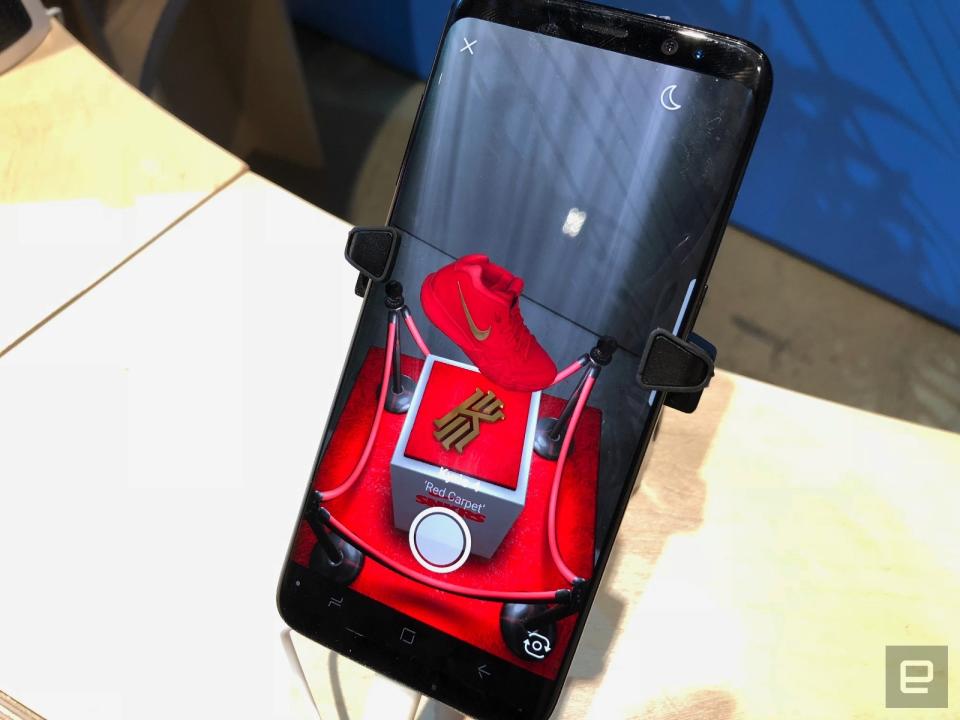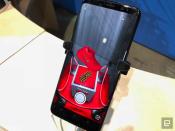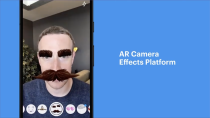Facebook is winning the augmented reality war
Over 2 billion users is a big head start.
If it weren't for data privacy, fake news and hate speech taking up so much air time, this year's Facebook conference would've probably centered around a far less controversial topic: augmented reality. It's one of a few unifying themes that's spread across most of Facebook's product announcements this week. Now that AR is in Facebook's News Feed, Instagram and Messenger, the company is poised to have the biggest AR platform on the planet.
It's all based on the Camera Effects Platform that CEO Mark Zuckerberg unveiled at F8 last year. The idea is simple: Use your Facebook camera to interact with digital items laid over the real world. The obvious example is selfie filters -- imagine bunny ears or a crown floating above your head -- but it can also do tricks like fill a room with liquid or add virtual steam to a real cup of coffee.
While it all started with Facebook's own Camera, third-party AR filters are finally rolling out to the rest of Zuck's family of apps -- including Instagram and Messenger. At F8's keynote earlier this week, Facebook showed a "floating heart" selfie filter. The hearts featured a headshot of Jiffpom, a cute Pomeranian pup with the unique distinction of being the most famous animal on Instagram.

If that sounds very different from anything on Facebook's own camera app, that's on purpose. While the underlying tools and platform are the same, the filters are not. "We could've just brought over the AR filters from Facebook to Instagram, but we recognize that the two networks are very different," said Ficus Kirkpatrick, an engineering director in charge of Facebook's AR projects. While Facebook is more for friends and family, Instagram has a greater emphasis on brands and personalities. "In the end, we want to increase the diversity of AR. The same tools produce fairly different results depending on who's using them."
A more obvious example is with the AR implementation on Messenger, which is far more commerce-oriented. Head of Messenger David Marcus showed how Nike would use Messenger and AR to debut a pair of limited edition sneakers. Just strike up a conversation with the SNKRS bot, answer some questions and you'll unlock that exclusive pair of kicks. You'll then get a full 360-degree close-up look at a virtual render of the shoe before purchasing it. Other brand-related implementations include trying on virtual makeup with Sephora and customizing a Kia hatchback.
At the heart of Facebook's plans for AR domination is AR Studio, an in-house tool Facebook updated this year with even more ways to create and distribute AR content. It's so easy to use that you can drag and drop elements without having to write any code. "We're aspiring to have the easiest to use creation tools," said Kirkpatrick. "You don't have to know code to use this. Artists and creators who just want to make art can play with it too."

This is one important difference between Facebook's approach to AR versus Apple's ARKit and Google's ARCore. Developers who use the latter two are usually building purpose-built apps, for arranging furniture on IKEA or building blocks with Lego Studio for example. Facebook, on the other hand, is making it more accessible. "We're more focused on tighter, simpler, shorter experiences," said Kirkpatrick. "We want to add on to something you're currently using."
Of course, Facebook is definitely not the first to incorporate AR in this way. Snapchat and Pokemon Go have implemented AR to varying degrees of success. But Pokemon Go is waning in popularity and Snapchat is suffering a drop in user growth. With more than 2 billion users on Facebook, more than 800 million on Instagram and over 1.3 billion on Messenger, Facebook is as popular as ever despite constant controversy.
With Facebook's AR platform, people can play around with AR in the app they already have. That, combined with the variety of AR effects, is how Facebook wants to differentiate itself from the pack. "This is why we're not doing all of it ourselves," explains Kirkpatrick on why Facebook opened up its AR platform to developers. "We need a lot of ideas for AR to succeed [...] Having more types of situations for more people to have other experiences is a big first step in."

Still, it's hard to take some of this seriously. After all, most of the AR use cases tend to be trivial (remember those bunny ears?). Yet, Kirkpatrick doesn't see this as a bad thing. "A lot of the apps for the iPhone when that first came out felt trivial too," he said, pointing out that there were a plethora of fart apps in the beginning. "Often things that turn out to be profound look like toys."
In the end, he's confident that face masks and selfie filters aren't the be-all and end-all for AR. At F8, head of VR Rachel Franklin showed a way that you could incorporate a 3D object into a Facebook news post in the form of a virtual gift. Earlier this month, Facebook also debuted a "target tracking" feature that lets you connect images, logos and signs -- like in movie posters -- with augmented content. Which could mean a future in which virtual ads are as commonplace as physical billboards.
"What we're trying to do is take the first steps toward the first generation of computing that's more immersive, and more visual, than ever before," said Kirkpatrick. With its clout and its reach, Facebook might very well accomplish its AR goals. That is, if it can deal with the harsh realities of scandal and controversy at the same time. There's no AR filter that'll make that go away.
Click here to catch up on the latest news from F8 2018!
